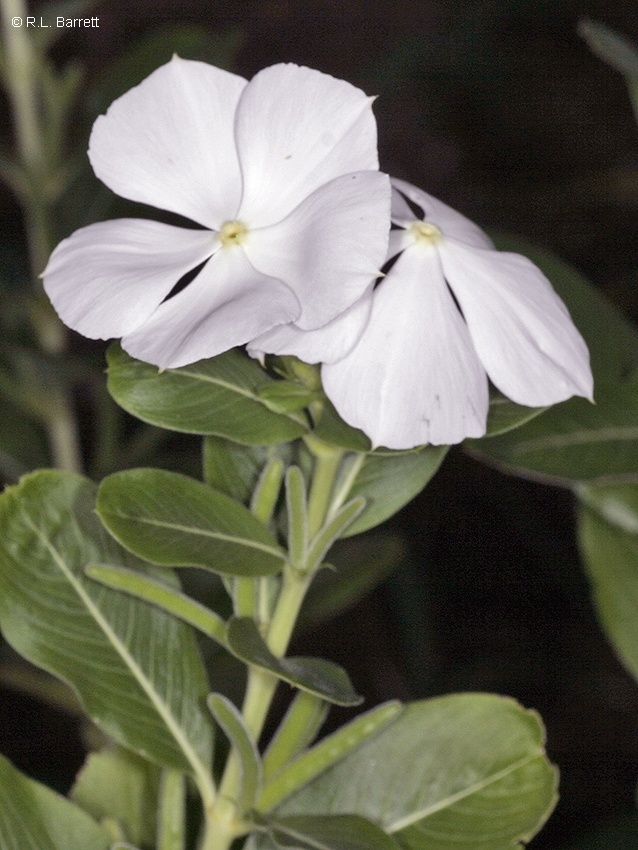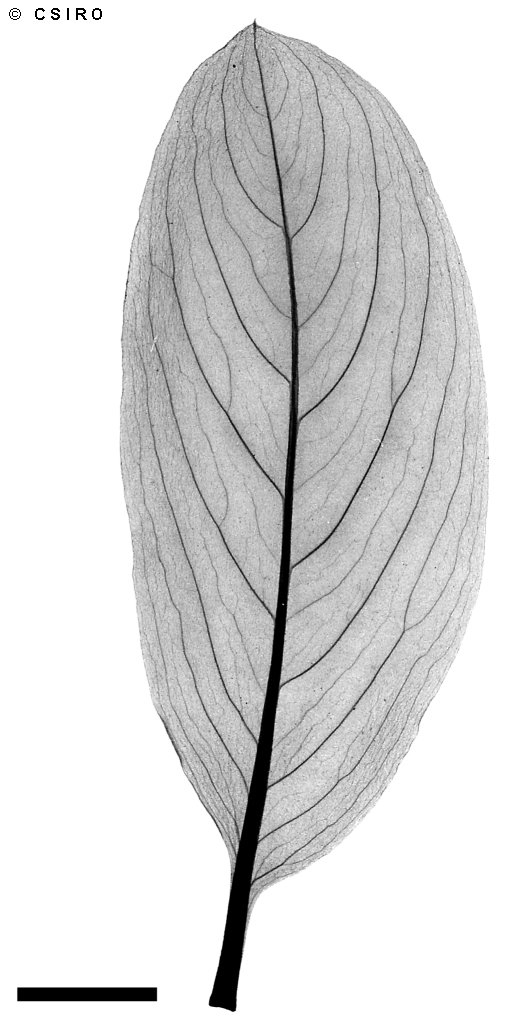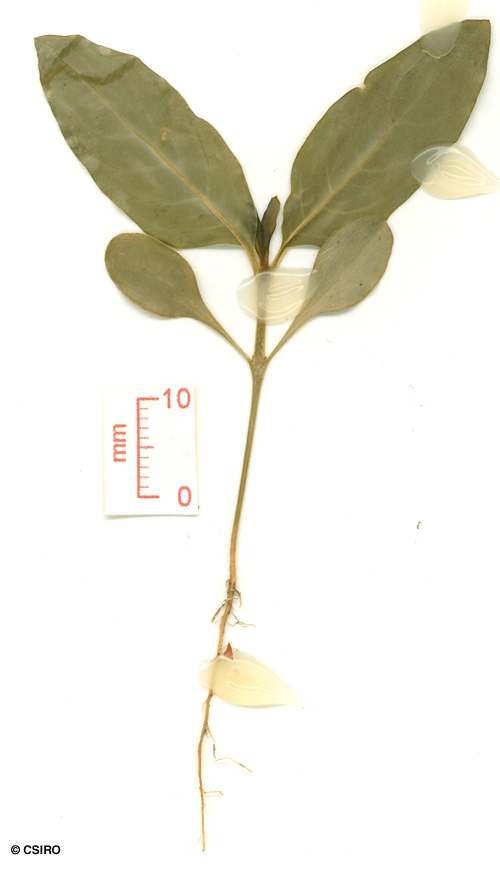Australian Tropical Rainforest Plants - Online edition
Catharanthus roseus (L.) G.Don





Don, G. (1837) A General History of Dichlamydeous Plants 4 : 95.
Periwinkle, Madagascar; Periwinkle, Pink; Periwinkle, Rose; Periwinkle, Rosey; Rosy Periwinkle; Rose Periwinkle; Pink Periwinkle; Old Maid Flower; Madagascar Periwinkle; Bright-eyes; Graveyard Plant
Usually flowers and fruits as a shrub about 1 m tall but also flowers when smaller.
Flowers usually paired in the leaf axils. Calyx lobes +/- linear, pubescent. A ring of white hairs at the base of the corolla lobes surround the orifice of the corolla tube. Lobes about 22 mm long, tube about 27 mm long. Pollen white. Two comparatively large, narrowly triangular glands present at the base of the pubescent carpels. Carpels united only by the style at the apex. Stigma +/- tower shaped like the tower of a mosque.
Fruits cylindrical, about 25-35 mm long, pubescent on the outer surface, hairs erect. Fruits may fall from the plant when they are still green. Funicle attached in the middle of a saucer-shaped depression in the side of the seed. Testa rugose. Embryo green. Cotyledons slightly wider than the radicle.
Cotyledons spathulate, about 10-12 x 5-6 mm, glabrous. First pair of leaves elliptic, opposite. At the tenth leaf stage: leaf blade elliptic, about 30-40 x 10-15 mm. Stipules small, about 1 mm long, more than two per leaf. Stems longitudinally grooved and producing a milky exudate when cut. Reticulate veins run at right angles to the midrib. Seed germination time 13 to 15 days.
Suspected of being poisonous to stock but the evidence is not conclusive. Everist (1974). Commonly cultivated and will survive hot dry conditions.
This species is a rich source of alkaloids and is generally regarded as toxic, although it is seldom eaten by domestic animals. This species is probably one of the most thoroughly investigated plants in the world. So far it has been shown to contain 75 distinct alkaloids, most of which were previously unknown. Cribb (1981).





